The 57th year: The more things change, the more they remain the same
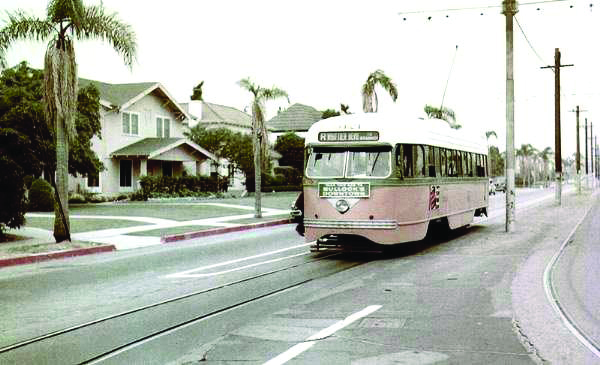
It was in 1954 that the Los Angeles Railway Company’s Yellow Car “3 Line” ceased traveling from downtown, east along Sixth and Third Streets, and up Larchmont Boulevard to Melrose Avenue.
Then, a decade passed.
And then, in the autumn of 1963, two entrepreneurial young women, Jane Gilman and Dawne Goodwin, founded a community newspaper. The Larchmont Chronicle has been in continuous, monthly publication ever since. This January 2019 issue is the first issue in our 57th year. Looking back, it is interesting to see that an overriding theme of initial headlines is a matter still affecting local neighborhoods today. Although the banner headline of Volume 1, Issue Number 1 was “Freeway Threatens Hancock Park Homes,” the underlying theme was that the State of California, in the form of Sacramento politicians and Division of Highways engineers, wanted certain things to happen in our local neighborhoods.
And local people objected.
It is interesting to review those early issues of Jane and Dawne’s new newspaper.
Beverly Hills Freeway
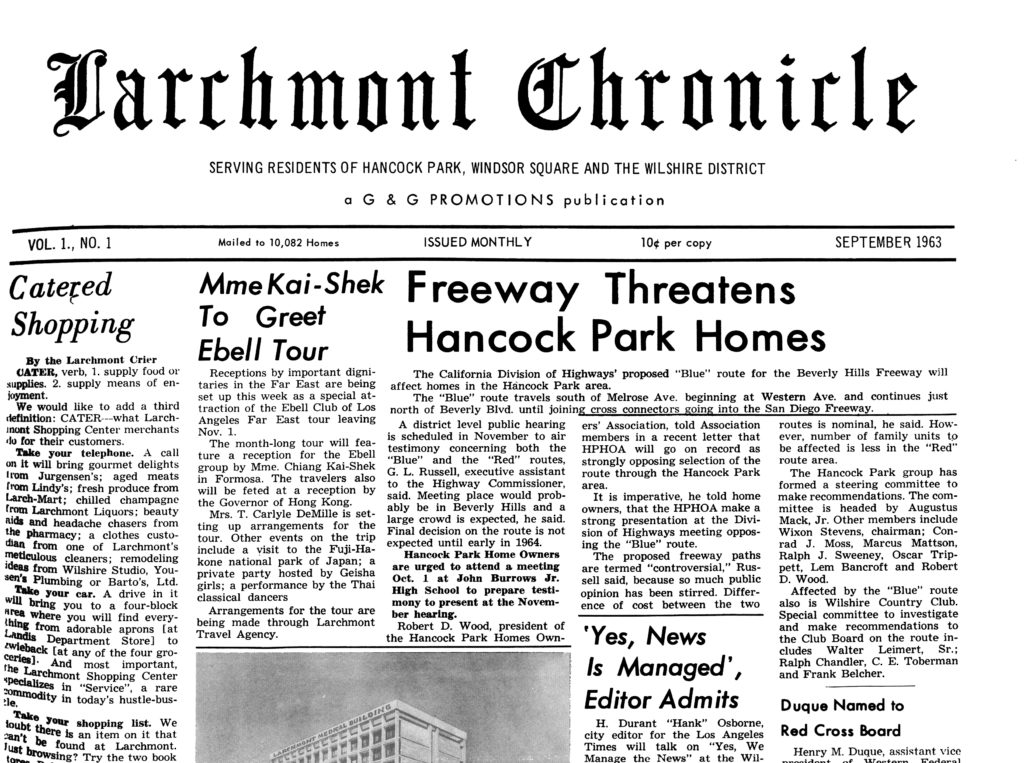
In Sept. 1963, in addition to the report on the freeway proposed to traverse our part of town, east to west, between Melrose Avenue and Beverly Boulevard, the front page noted that Madame Chiang Kai-Shek would be receiving Ebell members touring in Taiwan (still called Formosa by the 1963 Chronicle). The recruitment of local resident and banker, Henry Duque, to the Red Cross chapter board also was noted, just “above the fold” on Page 1.
Apartment tower
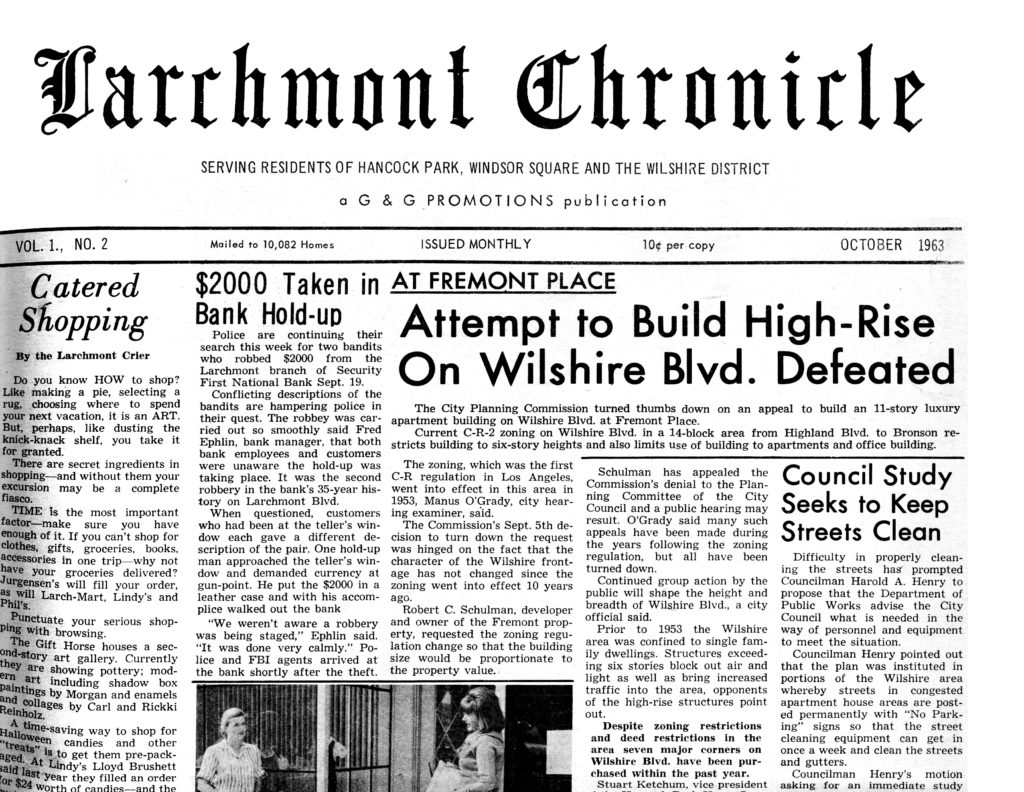
The following month, the big headline was about a threat to the neighborhood from a developer’s request for a zone change to allow an 11-story apartment building on Wilshire Boulevard next to Fremont Place. The zoning on Wilshire had been single-family through about 1953, when some parcels were changed to allow six-story buildings. The developer wanted twice the height, and the city said “no.”
The article cites an interesting observation by an unnamed city official: “Continued group action by the public will shape the height and breadth of Wilshire Blvd.” (That came true in the late 1970s, when Councilman John Ferraro and his constituents got the Park Mile Specific Plan adopted to allow only three-story apartment and commercial buildings on Wilshire adjacent to single-family homes between Highland Avenue and Wilton Place.)
Also in that second issue of the Chronicle, the front page told of $2,000 taken in a robbery at the Security First National Bank on Larchmont (where the Bank of America is today). And then-Councilman Harold A. Henry (as in the park in Windsor Village) was pushing for better street cleaning.
Community organizing
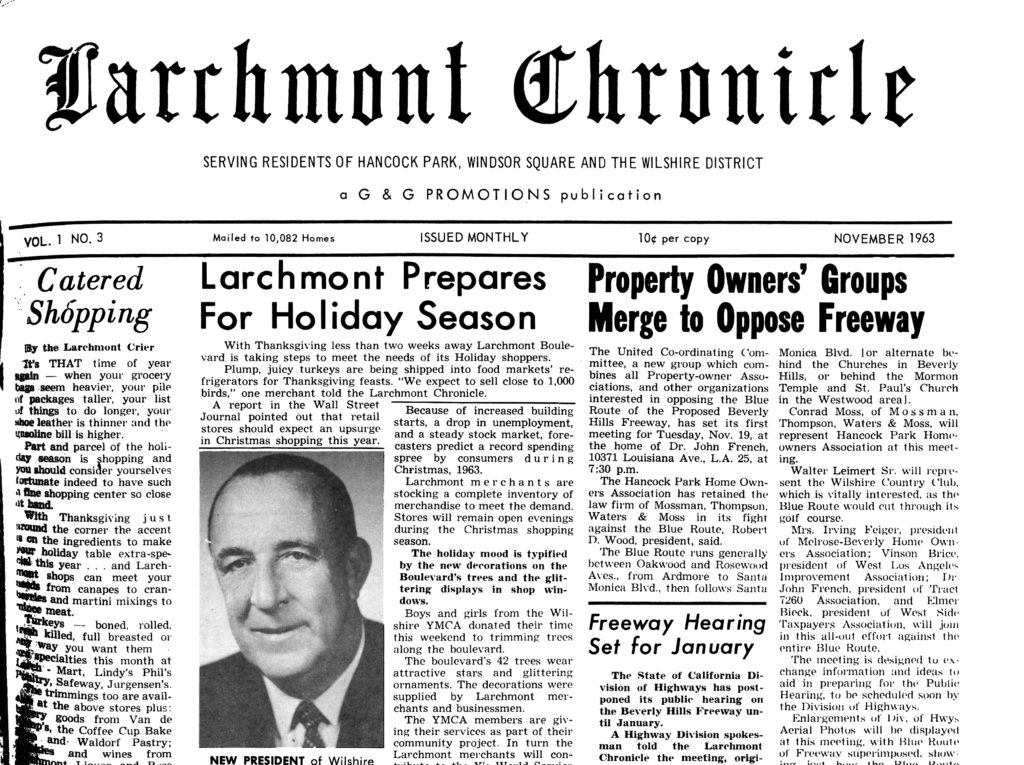
In November 1963, the proposed Beverly Hills Freeway was back on Page 1. “Property Owners’ Groups Merge to Oppose Freeway” was the headline. The organizing by neighborhood leaders of a citizens’ committee, the “United Coordinating Committee” was announced, and the Hancock Park Home Owners Association’s retention of lawyers to challenge the route was part of the story. The front page also described holiday “decorations on the Boulevard’s trees and the glittering displays in shop windows.” There is consistency on Larchmont!
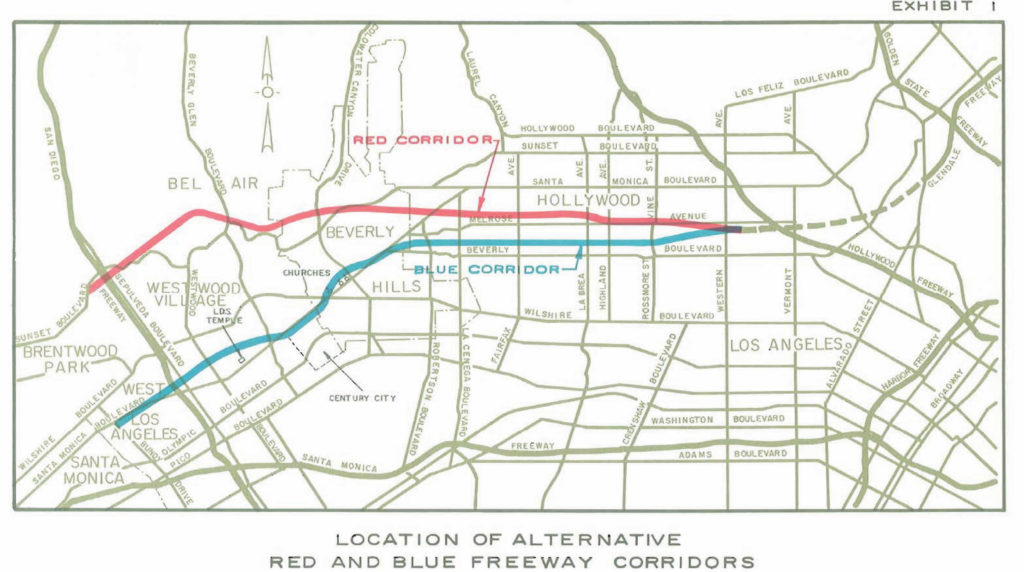
Up through the 1970s, the state’s threatened freeway through the community continued to be a big focus of Larchmont Chronicle coverage. The local opponents had evolved into a broad-based organization titled the “Save Our Community” (S-O-C) Committee. A May, 1968, four-page section in the Chronicle recounted the problems that would befall the neighborhood if a super-highway cut through it, and a large map (“Design for Congestion,” included here) was a part of the story.
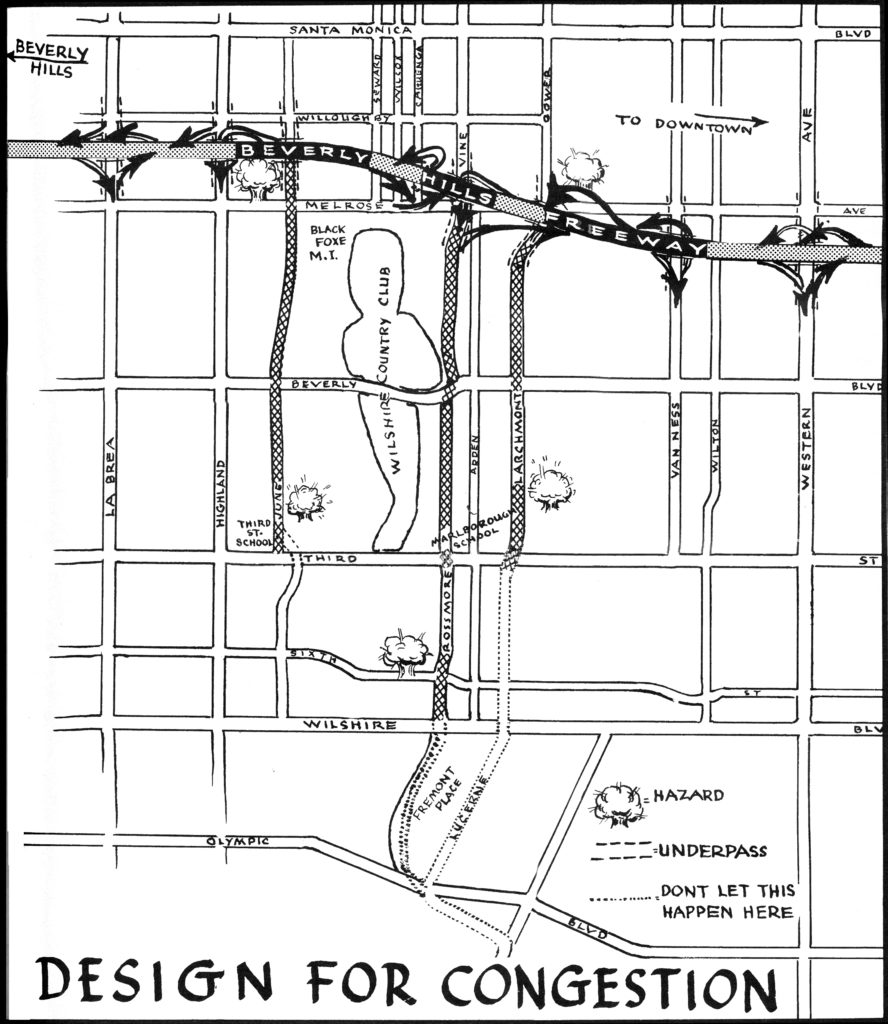
Then, on the paper’s front page in January 1970, the Chronicle banner headline announced: “Traffic Threat Averted” and added that “Victory Halts New Area Traffic.” The S-O-C Committee had reached a compromise that leaders said would “prevent the area from being deluged with added traffic.”
Those old-timers clearly did not anticipate Waze.
[The adopted Beverly Hills Freeway route, from where the present Glendale Freeway ends in Silver Lake to the 405 Freeway, was rescinded by the State of California in 1976.]
The January, 1970, front page also had the headline, “Local Police Meetings with Residents Focus on Burglary Prevention Methods.” As with some people in Sacramento always thinking they know everything that is best for our local neighborhoods, we still focus on reducing local crime.
Plus ça change.
Category: News








A very good save! I would have loved to see the community rally to save *other* neighborhoods too, such as the freeway decimation seen in East LA… 🙁